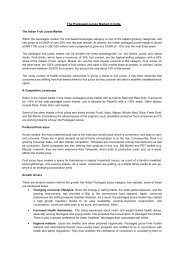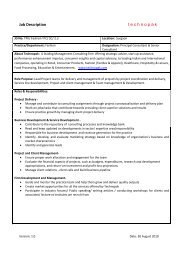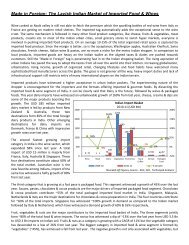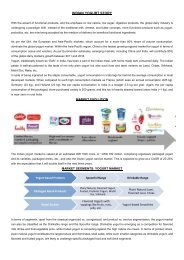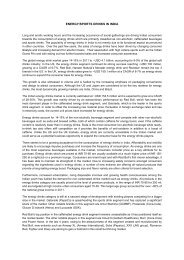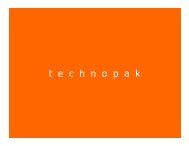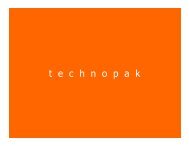a quarterly report by - Technopak
a quarterly report by - Technopak
a quarterly report by - Technopak
You also want an ePaper? Increase the reach of your titles
YUMPU automatically turns print PDFs into web optimized ePapers that Google loves.
perspective<br />
a quar terly repor t <strong>by</strong><br />
Volume 02 / 2009<br />
| Volume 02<br />
therefore be streamlined to avoid constant<br />
backtracking and cross-overs. These not only lead<br />
to confusion and chaos, but also issues of infection.<br />
At the same time, high volume traffic, restricted<br />
traffic and after hours departmental needs should<br />
be kept in mind.<br />
Given the complexity of healthcare environments,<br />
overlaps in patient movement cannot be completely<br />
avoided. However, all efforts should be made to<br />
minimize them.<br />
Nursing care forms one of the most important<br />
components of patient care during hospital stay.<br />
Nurses spend an unbelievably large part of their time<br />
walking from room to room, attending to patients.<br />
Long corridors and inefficient planning contribute<br />
to making travel time for nurses significant.<br />
Pharmacy<br />
Good travel distance planning leads to better<br />
operational efficiency as nurses are able to respond<br />
to patient’s clinical needs and any emergency calls<br />
in a timely manner. In addition, it results in less staff fatigue and more staff satisfaction.<br />
One of the design strategies to address the issue of travel time is decentralized nursing stations. However,<br />
it is important to strike the right balance between centralization versus decentralization. To what extent<br />
should nurses’ work area be decentralized? What should be the overall patient unit layout in order to<br />
optimize resources as well as minimize travel distances for staff?<br />
While there is no universal answer as different<br />
organizations have different models of care, the<br />
thumb rule of an 8 to 10 patient bed management<br />
unit is a good starting point.<br />
New construction for healthcare is increasingly<br />
looking at standardization as a means to achieve<br />
operational efficiency.<br />
Standardization helps in optimizing use. If various<br />
rooms are equipped to handle multiple types of<br />
procedures, the overall utilization is more efficient.<br />
In case demand outweighs planned capacity for<br />
different procedures, standardized rooms can<br />
help in accommodating the additional patient/<br />
case volumes.<br />
51 | Building Operational Efficiency in Healthcare Delivery<br />
Exhibit 16<br />
Exhibit 17<br />
Patient Flow<br />
Typical Patient Flow for Outpatient Services<br />
Patient Arrival<br />
Registration<br />
Waiting<br />
OPD<br />
Consultation<br />
Nurse Travel Distances<br />
Billing<br />
Diagnostics<br />
Layout of a Typical Patient Care Unit Nurse Travel Distances



